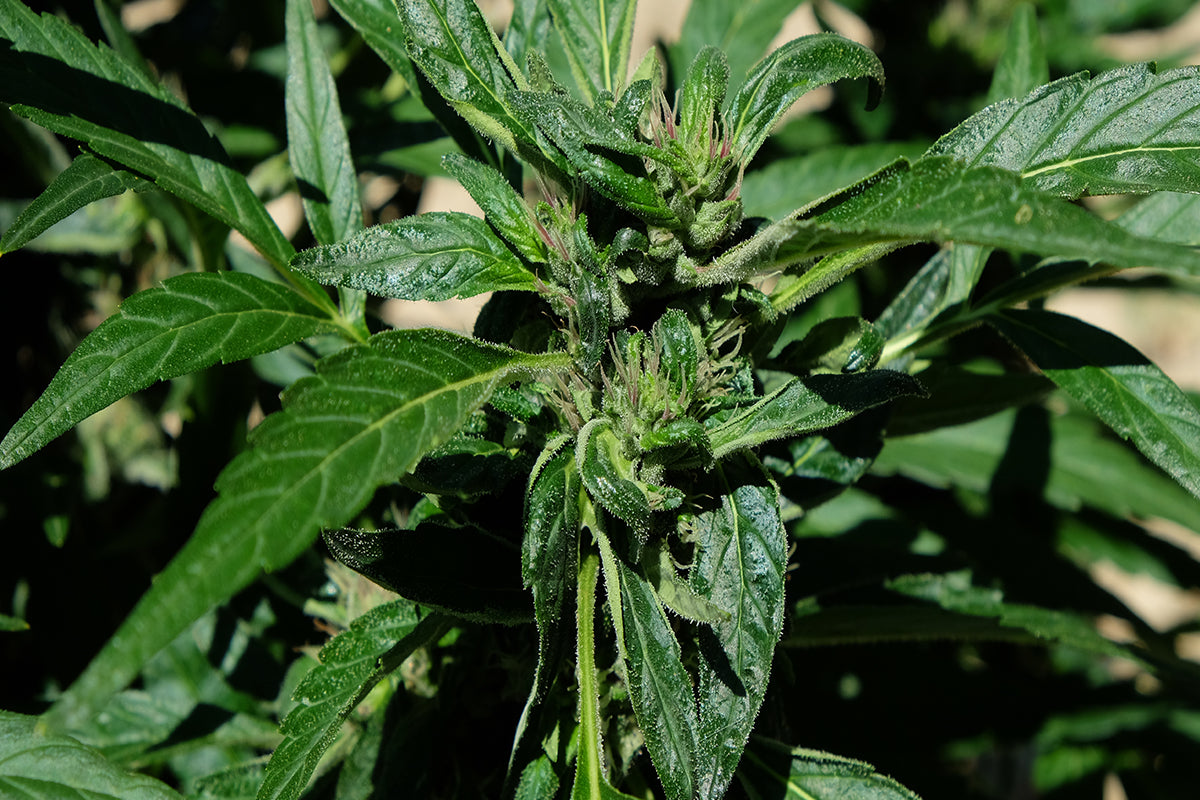What are cannabis trichomes? What are they for? How does the plant produce them? How many questions have you heard about trichomes and not always had a satisfactory answer, which is why we decided to delve deeper into this topic. Specifically we will see:
- About cannabis
- What are trichomes and what do they look like?
- What are trichomes for?
- What color should the trichomes of a plant ready for harvest be?
About cannabis
In all the articles in which we have dealt with cannabis and its derivatives , we have often focused on some of their innumerable potentials. From the point of view of practical, therapeutic and recreational use.
For example, we have seen the exploitation of textile fiber obtained from the stem as part of the first group. Studies on the use of hemp ethanol as a form of alternative fuel to fossil fuels and the use of hemp in global gastronomy.
Of the second group we have repeatedly examined the various aspects of recreational and healthcare use, made possible mainly by the aforementioned cannabinoids THC and CBD . The similarities and divergences of which we have analyzed at length in a specific article .
In order to go into detail and explain in more depth the millennial evolution of the cannabis plant, its potential for exploitation, its life cycle and the functioning of its active ingredients, we have often had to resort to premises or digressions on the morphology of the plant. In its two varieties of sativa and indica .
And so, for example, we have seen that the two species have developed different forms. Not only! Also the size of the leaves and stem in order to better adapt to the different climatic conditions in which they evolved.
As regards the study of the two main cannabinoids, however, we had to introduce topics mentioned in the field of chemistry and inevitably disclose rarely used technical terms. Cannabidiol, brain barrier, tetrahydrocannabinol etc.
Today we will analyze other components of cannabis of which most consumers have experience... practical but not theoretical!
 What are trichomes and what do they look like?
What are trichomes and what do they look like?
We are talking about trichomes , yet another technical term borrowed from botany. This time, however, we will discuss a characteristic of the plant that is impossible to see with the naked eye. Clearly identified only following the use of a microscope or magnifying glass.
While it is true that they cannot be seen clearly and individually, it is true that trichomes are among those responsible for the color of the plant . This is easily identifiable at a simple glance. Trichomes can also be touched and experienced!
In fact, they are responsible for that "sticky feeling" on your fingers when handling cannabis plants. And more generally about the effects of cannabinoids on those who take them , including the high. So let's see what it's about.
Trichomes are essentially spontaneous epidermal secretions released by the cannabis plant during its life cycle. The word comes from the Greek term Tríchōma , which means “ hair growth ”.
And in fact, under the microscope, trichomes appear like a vast clearing of hairs. Although zooming in further we realize that each of these hairs is surmounted by a small mushroom-shaped head. Which makes it look more like a microscopic mushroom.
They are basically resin glands . Their arrangement on the surface of the inflorescences through a "pincushion" conformation is made possible by the notable density of the resin contained .
This resinous "fuzz" is a defense, a barrier that the plant erects against climatic factors or harmful external mechanical agents.
What are trichomes for?
We have already seen how during its thousand-year evolution cannabis has implemented a series of defensive strategies, mainly morphological. Designed to protect it from excessively humid and suffocating climates or, on the contrary, dry and cold ones. Trichomes are another defensive weapon .
The cannabis plant begins producing trichomes as soon as the seed germinates. This production proceeds incessantly and regularly until reaching its peak during the flowering phase. “Colouring” with light warm shades a plant that until recently only seemed green. Until reaching the peak of growth in the last weeks of flowering.
They are different and specialized: they can grow on the underside of the leaves, in the stems, in the petioles or in the flowers. They can consist of a single cell but can also be multicellular. There are “ sessile glandular trichomes”, “pedunculated capitate trichomes” , “bulbous trichomes” or “cystolytic trichomes ”. Each with different shapes and sizes.
These droplets produced by the plant protect it from a series of external aggressions . Harmful insects, wear from rubbing of branches in the wind. They also constitute a filter against UV rays , and a thermo-insulator against dehydration from excessive heat or hypothermia.
It has also been noted that they defend the plant from fungal aggression, making it particularly refractory to infections.
From another perspective, a trichome can be seen as a real factory of essential oils, cannabinoids and terpenes. Therefore fully responsible for the effects, psychoactive and otherwise, of the plant on the consumer.
And speaking of terpenes, which we dealt with en passant in a recent article on the decarboxylation processes of cannabis, they too have a defensive function, among others. Emitting the typical very pungent aroma, it dissuades those insects looking for... lettuce!
In short, trichomes are an irreplaceable ally for the grower and consumer of cannabis. In addition to all this, to an expert eye , trichomes provide important data on the quality and stage of development of a cannabis plant.
What color should the trichomes of a plant ready for harvest be?
First of all, it is good that the plant has a significant quantity of trichomes on its surface. This will be an indication of a rich content of active ingredient .
As regards this first aspect, there is little that can be done: genetics have a significant importance , and if you want to obtain a plant with high trichome yields, in addition to correct cultivation it is essential to start from a genetic line suitable for this purpose. .
However, there are some tricks to induce the plant's secretory cells to increase activity. In fact, we know that greater or lesser exposure to light has a decisive impact on the production of trichomes. And in fact, plants grown near the equator tend to produce higher quantities of resin. Presumably to shield themselves from the large amount of UV rays.
Therefore, artificially subjecting the plant to a greater dose of UV-B rays for a period of two or three weeks can increase the production of trichomes.
Recently, due to concerns about energy consumption, most cannabis growers have tried irradiating their plants with LED lights. Which notoriously do not emit UV-B rays. However, they maintain that subjecting the plant to a few sessions of "stress" causes it to increase the secretion of trichomes.
This is a gamble that forces us to adopt a trial-and-error policy, because naturally there is a point beyond which the stress becomes irrecoverable for the plant, whose structure succumbs.
The coloration of the trichomes provides an additional growth index that is very important for the grower.
In fact , the trichomes that a plant produces during the vegetal cycle have their own evolution as the plant grows . Just as you could say that the plant changes its characteristics as the trichomes grow.
By observing trichomes carefully under a microscope you can see how they go through three distinct phases. In a first phase they appear as an expanse of stems surmounted by a head, both transparent and crystalline. At this stage the production of cannabinoids has not yet begun, and therefore the plant is not "mature". That is, it is not ready for consumption.
Afterwards the head will become slightly more voluminous and the trichomes will take on a more opaque, almost milky colour . In this case we speak of a "cloud carpet". This is the phase in which the plant has the highest concentration of psychoactive elements. Harvesting buds at this stage will yield a very THC-rich harvest.
After that , the plant begins to dry slowly, and the trichomes will take on a browner color . Ranging from amber to reddish in color. The plant stops producing THC. And the THC in it begins to convert into CBN (cannabinol).
The cannabis harvested in this phase will give a less psychoactive and more "corporeal" effect, stimulating sleep. Deciding the best time to organize the collection is essential. In short: each phase has its own effect, so... watch out for the trichomes!
If the article was of interest to you, share it on social media with the rest of the Community, every single share helps us support our Blog and keep you 360° informed about the world of Cannabis.
You might also be interested in:









1 comment
A beautiful movie, of a beautifully green dream and vision. Thank you for sharing your efforts, dreams and cheers to your success. Much 💚 from California.
Appreciate you all,
Charlie